
|
| Metamorphic rocks always seem to get the shortest treatment in introductory geology classes. This is unfortunate, because metamorphic rocks form right where the action is: in the hearts of mountain belts during continental collisions, along subduction zones as the slabs grind ever deeper below the surface, right next to magma chambers as they slowly radiate heat, along the mid-ocean ridges as hot corrosive seawater is flushed through the oceanic crust, and the list goes on. Metamorphic rocks witness what we can only infer and imagine.
Metamorphic rocks are rocks that have undergone a solid-state recrystallization in response to changes in temperature and/or pressure, perhaps aided by chemically reactive water. During metamorphosis, the original mineral grains in a rock may grow larger, do nothing, or break down and form new minerals. What happens depend on the starting minerals and the pressure, temperature, and fluid conditions associated with the metamorphism. The list below divides metamorphic rocks into foliated and nonfoliated varieties. Foliated rocks have platy or elongate minerals aligned in roughly parallel planes or in wavy bands or planes. Nonfoliated rocks may show colored bands that reflect minute impurities in the rock, but the dominant minerals show no visible alignment. |
Foliated Textures |
 |
Non-foliated textures |
 |
|
|
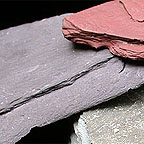 |
|
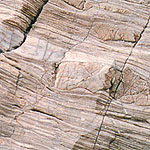 |
|
|
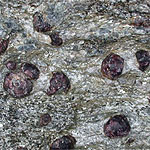 |
|
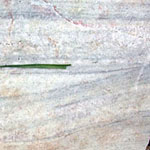 |
|
|
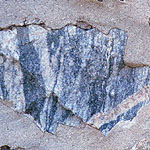 |
|
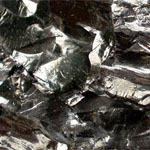 |
|
|
 |
(gray rocks near bush) |
 |
|
|
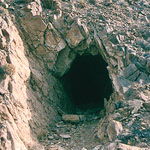 |
|
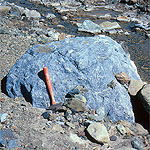 |